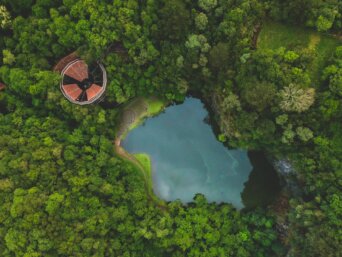- About
- Topics
- Story
- In-Depth
- Picks
- Opinion
- News
- Donate
- Signup for our newsletterOur Editors' Best Picks.Send
Read, Debate: Engage.
| topic: | Sustainable Consumption |
|---|---|
| located: | Brazil |
| editor: | Ellen Nemitz |
Editor’s Note: This article is part of our groundwater campaign, in observance of the UN Water Day. Find more groundwater-related articles here.
Brazil hosts about 12 percent of the world’s freshwater and 53 percent of South America's supply. Nonetheless, its water surface has shrunk by 15.7 percent over the past few decades as a result of non-sustainable land use for livestock and agriculture, the construction of dams for irrigation or energy production and also climate change, among other factors. The remaining water is sometimes not potable or available for human use.
In this scenario, groundwater is an important reservoir that helps more than half of 5,570 cities in Brazil - about 30 million people - to access the vital resource, according to data from National Water Agency (ANA) published in the study "The silent revolution of groundwater in Brazil: an analysis of the importance of the resource and the risks of lack of sanitation." Brazil hosts 70 percent of one of the largest Integrated Aquifer Systems, the Guarani Aquifer (remaining parts are in Argentina, Paraguay and Uruguay): the aquifer contains 1.2 cubic kilometres or 40 trillion litres of water.
The use of this invisible resource is, however, mismanaged and largely irregular. According to the Sustainable Water Institute (Instituto Água Sustentável), the water is taken from the Guarani Aquifer continuously without respecting the seasonal variation, which affects its recharging capabilities. Moreover, the majority of artesian wells are built in Brazil without the government’s authorisation, which can easily lead to an unsustainable exploitation of the resource that disregards recharging capacity of the aquifer and does not care about the final destination of the water after use.
"[Groundwater has] better quality, more protection and is easier to replace, but is very difficult to regulate, especially when there are no inspection resources," said Suzana Montenegro, a professor at the Federal University of Pernambuco and president of the Water and Climate Agency of Pernambuco in an interview with the geologist Everton Oliveira. "It's not like a surface water reservoir, which fills up every year even with less rainfall. The groundwater reservoir does not [fill without deliberate protective efforts]."
She adds that there have been advances in regulating the granting of groundwater and hydrological studies, but this has not been able to prevent problems such as contamination. Aquifers can be contaminated by a handful of activities, including extensive agriculture, mining, urbanisation and industrial development, for example. In Brazil, there is another enemy: the lack of sewage treatment systems. In the northeastern city of Natal, for instance, studies found nitrate under urban areas, a component highly related to sewage. The researchers affirmed that the results of treating the sewage now would appear only in a few decades, "due to the reduced speed of groundwater and the oxidising environment of the aquifer, which preserves the contaminant."
Providing water for nearly 215 million people will require a complex effort from Brazilian governments, companies and NGOs to protect surface water and groundwater alike, and optimise the use of rainfall and residual water, for example. "Brazil has developed over the years around a false abundance of water, leading to a culture of waste, as if water were unlimited," reads an article from Águas do Brasil. Now, it is time to review our ways of taking care of our water.
Photo by Patrick Miyaoka

